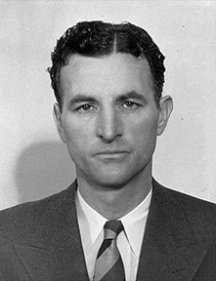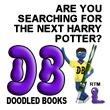|
|
|


|
|

|
How to Build an Effective eBay Presentation
by Craig Stark
#44, 30 May 2005
|
Clair Bee, coaching legend and author of the collectible Chip Hilton series, died in 1983 at the
advanced age of 87. 17 years earlier he completed his 24th and final title in the Hilton series,
Fiery Fullback, though this wasn't published until 2002 - fully 36 years later. Why the delay? The times they were a changin' in the 60s, and, like many marriages gone bad, one of the factors that had made his books so attractive at mid-century to millions of young readers, myself included, was precisely the thing that sounded their death knell a decade later: a conspicuous emphasis on traditional values.
Bee saw the writing on the wall well in advance of Fiery Fullback. #23 in the series,
Hungry Hurler, had been published earlier that same year and was in the
process of more or less slumping in bookstores. Titles that immediately preceded
it weren't hitting home runs either. (EDITOR'S NOTE: as you might suspect,
Hungry Hurler's low sales numbers account for its elevated value today. It's
difficult to find so much as an average copy for under $200.) Given the establishment-bashing
climate of late 1960's America, there was no reason to think why Fiery Fullback would fare any better. Shortly before Bee died, his daughter promised she would pursue its publication and assured him she wouldn't alter its contents. It took some time, but she was true to her word.
Of course there were other factors besides the overt expression of traditional values that contributed to the series' popularity. Bee's storytelling ability for one, and, perhaps more importantly, an unerring capacity to exude authenticity. Bee knew his stuff cold. Like his protagonist Hilton, he had starred in three sports. Later in life, after a remarkably successful career as a coach at Long Island University, he was inducted into the Basketball Hall of Fame. Nothing like having been-there-done-that to make things ring true.

As a bookseller, I keep a watchful eye on common books that are collectible. And why not. They're easy to find, and payoffs are handsome and frequent. For years, Bee's books have been intensely collectible. Despite the fact that juvenile sports fiction was published by the boatload during this period, only Hiltons seem to have appreciated in and largely maintained value - well, if that's what you want to call it at this moment in time. The truth is that things in the Bee-hive aren't looking as good for most sellers lately. Final values on eBay have come down significantly from where they were a year or so ago. I suppose this could be shrugged off as a market trend that seems to affect almost all books generally. After all, more Hiltons are out there in large numbers, and it stands to reason that more and more of them would continue to surface and drive prices down.
But even if this is so, do booksellers have to accept this fate? In my case, as a seller who sells them, the answer is no. If it's yes or maybe for you, read on.
When I glance at eBay auctions for collectible books, especially Chip Hiltons, 9 times out of 10 I'm distinctly unimpressed, inadequately informed (or altogether misinformed), and sometimes appalled at the presentations. Photographs, which rarely exceed the grand total of 1, are often unclear, don't adequately reveal condition details, and possess little or no aesthetic quality. Moreover, descriptions frequently fail to include the critical publication data required to establish edition state. It's one thing to parade this junk out with books that have largely or entirely content value, but when you try it with collectible books, it's suicidal. Collectors have become increasingly gun shy at taking chances on auctions that don't communicate what they need to know, and we all know how attempting to extract additional information from sellers before auctions close often nets what the British call a duck's egg.
The sad thing is that this approach is costing booksellers big, and I bet many of them may not even be aware of it. Effective salesmanship begins and ends with effective communication, and if you won't take the trouble to master your photographic and descriptive skills, you'll perennially be in trouble as a bookseller, no matter what the quality of your inventory is.
So, since (I assume) we all agree it makes perfect sense to accommodate the buyers who will be considering your books, I'll start with this: what do I, as a buyer, want from your presentation? Today I'll focus on photographic content; next time on textual.
The first and most important thing I'm looking for is a good picture of the book - as a complete entity. A 3-dimensional object with nothing truncated. In case you don't know what I'm talking about, this is a good picture:
This isn't:
(Note how the area in the top left hand corner of the front board appears to be creased. In the first picture, this is clearly a basketball net.)
This one isn't much better:
Only the first picture gives me an accurate sense of what the book is. Clarity is good, color is close to faithful and the book actually looks like a book, not a lifeless, blurred chunk of pulp. This picture might be the only image I'd need (along with some publication data) to make a confident purchasing decision if this wasn't a collectible book and I had some knowledge of its contents going in. This particular book, however, is eminently collectible and, furthermore, appears to be in collector's grade condition - heck, I've got the thing in my hands; it is. Therefore, because I might be willing to spend a slightly irrational amount to add it to my collection, I want to know more.
|
|


|


